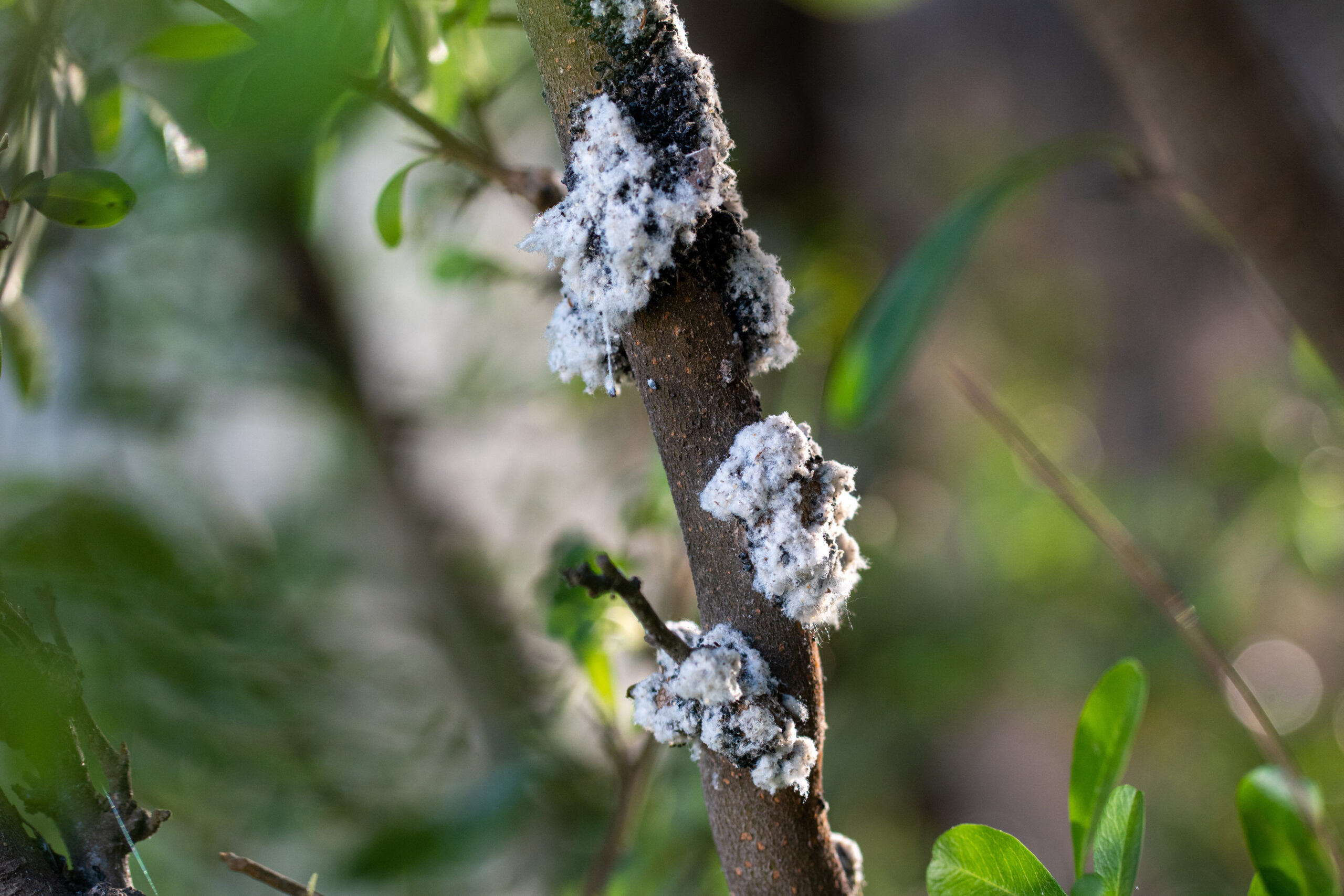Woolly aphids invade ash trees in Eagle Mountain

Eagle Mountain’s ash trees are seeing the presence of an uninvited guest this season: woolly aphids.
These sap-sucking insects have been discovered in high numbers around Nolan Park and the Tinamous Circle area, and City officials say the infestation is likely more widespread.
City Forester Alec Boydston is monitoring the situation and encouraging residents to do the same, especially if they have ash trees on their property.
“The woolly aphids are winged as adults, which helps them spread to other trees quickly,” Boydston explained. “You’ll see these gray-white-brown clusters of insects, usually at the base of ash trees, crawling up the trunk and onto the branches. The leaves will be curled into little balls—still green, but deformed.”
Aphids, including the woolly variety, are tiny insects that feed by sucking sap from plant leaves, causing the leaves to curl and distorting the tree’s foliage. While the damage is often cosmetic, aphids are prolific breeders, laying large clusters of eggs before winter and spreading rapidly in the spring.
Although the trees are not expected to die from the infestation, a heavy presence of aphids can cause early leaf drop and increase the risk of secondary issues, such as fungal infections.
“They can also transmit diseases like powdery mildew, which is a white fungus that can affect other types of trees,” said Boydston.
Residents concerned about their trees have a few options. Chemical sprays can be effective in treating aphids, but they can be costly and may not be practical for widespread use. Insecticidal soap and horticultural oil can also be found at most hardware stores to control infestation.
The City is considering effective natural alternatives such as the introduction of ladybugs, which feed on aphids throughout the growing season.
“They’re a good, low-cost option for managing outbreaks,” says Boydston.
The City is not currently planning a large-scale spraying effort, but Boydston said his office is available to help residents identify the pests and recommend treatments.
“If you’re not sure what you’re seeing, reach out,” he said. “We’re happy to take a look and help determine the best approach. Local nurseries are also great resources for identifying and treating tree pests.”
While the current outbreak is causing concern among residents, Boydston noted that aphid populations tend to rise and fall in natural cycles.
“Unless it gets really bad, the main impact is aesthetic,” Boydston says. “We don’t expect widespread tree death. It’s just something to be aware of and manage when it pops up.”
To report an aphid sighting or get help identifying a tree issue, residents can contact Alec Boydston through the City’s mobile app.